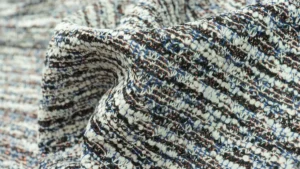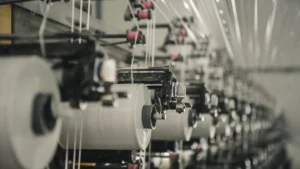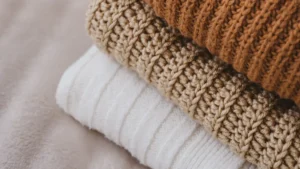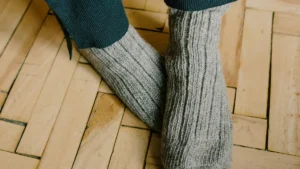
You’ll love working with mohair yarn. This special yarn comes from the soft, shiny fleece of Angora goats. Mohair feels light and smooth in your hands, but it keeps you warm and cozy. Many people call mohair yarns a true luxury because of their softness, sheen, and lasting strength. When you try knitting and crochet with mohair, you notice the gentle halo and bright colors. Mohair yarn brings excitement to both knitting and crocheting, no matter your skill level.
Key Takeaways
Mohair yarn comes from Angora goats. It is soft, shiny, and warm. The fiber feels light but keeps you cozy.
Mohair is strong and has a pretty shine. It comes in bright colors. It has a fuzzy halo that makes projects look soft and glowing.
You need patience to work with mohair. The fibers can tangle easily. Simple tips can help you avoid problems.
Mohair yarn is best for simple knitting or crochet patterns. It also works well with other yarns. This adds more texture and warmth.
Take care of mohair by hand washing it. Dry it flat and store it folded. This keeps your mohair projects looking nice for years.
Mohair Yarn Basics

Origin and Source
You might wonder where mohair yarn comes from. The answer is simple: Angora goats. These goats have been around for thousands of years. People first raised them in Turkey, near the city of Ankara. Over time, Angora goats spread to places like South Africa, the United States, and Australia. Mohair is special because only Angora goats produce it. Each goat grows a long, shiny fleece that gets sheared twice a year. This fleece can grow up to 15 inches! For centuries, people have prized mohair for its beauty and strength. In the past, mohair fabrics were so valuable that only the rich could afford them. Today, you can enjoy classic mohair yarn in your own projects.
Fiber Composition
Mohair yarn stands out because of its unique fiber structure. The mohair fibre is made mostly of keratin, just like your hair and nails. What makes it different is the way the fibers are built. Mohair fibers have smooth, overlapping scales that do not felt easily. This means your projects stay soft and fluffy. The fibers also have a special core that gives them strength and stretch. Young Angora goats produce the softest and shiniest mohair. When you touch mohair yarns, you notice their silky feel and gentle bounce. Mohair is also great at holding color, so you get bright, beautiful shades every time.
Mohair vs Other Yarns
Let’s see how mohair yarn compares to other popular yarns. Here’s a quick look:
Fiber | Texture | Warmth | Durability | Sheen | Typical Uses |
|---|---|---|---|---|---|
Mohair | Excellent | High | Lustrous, silky sheen | ||
Cashmere | Buttery smooth | Superior | Moderate | Subtle matte finish | Sweaters, scarves |
Silk | Smooth, slippery | Moderate | Low | High, glossy sheen | Evening wear, fine details |
Alpaca | Plush, dense | Very high | High | Subtle sheen | Winter wear, blankets |
You can see that mohair yarn is both soft and strong. It has a shine that stands out, often called the “diamond fiber.” Mohair yarns feel light but keep you warm. Unlike some other yarns, mohair resists wrinkles and holds its shape well. If you want even more softness, try a silk mohair blend. Many crafters love mohair for its sustainability, too. Angora goats can be shorn without harm, and the yarn lasts a long time. Whether you choose pure mohair or a blend, you get a yarn that is beautiful, durable, and fun to work with.
Properties of Mohair Yarn
Softness and Sheen
When you touch mohair, you notice how soft it feels right away. The fibers glide through your fingers, making every stitch feel gentle and smooth. Mohair yarn stands out because it feels slinky and luxurious, almost like silk but with a unique bounce. You can use it for scarves, shawls, or sweaters, and you’ll love how it feels against your skin.
The stunning sheen of mohair yarn catches the light and gives your projects a beautiful glow. This shine comes from the smooth surface of each fiber. When you knit or crochet with mohair, your finished piece looks polished and bright. The sheen also helps colors look more vibrant, so your work stands out in any crowd.
Tip: If you want your project to look extra fancy, choose mohair yarn for its natural shine and softness.
Warmth and Lightness
You might think that something so light could not keep you warm, but mohair proves you wrong. Mohair yarn feels airy and almost weightless, yet it traps heat very well. You can wear a thin mohair sweater and still feel cozy on a chilly day.
Fabrics made with mohair or mohair blends are thicker and have higher thermal resistance than many other yarns, like acrylic or cotton.
Mohair/wool/nylon yarns can keep you up to 20% warmer than similar blends with bamboo.
The thickness and structure of mohair yarn help hold in warmth, so you stay comfortable without feeling weighed down.
When you use mohair in a tight or honeycomb knit, you get even more insulation.
You get the best of both worlds: warmth without bulk. That’s why so many crafters love using mohair for layering pieces and winter accessories.
Durability and Resistance
Mohair is not just about looks and feel. It’s also tough and long-lasting. The fibers are naturally long and smooth, which means your mohair yarn projects resist shedding and pilling. You can wear or use your creations for years, and they still look fresh.
Mohair resists wrinkles and creases, so your garments hold their shape and always look neat.
The resilience of mohair helps it bounce back after stretching or washing.
Mohair yarn keeps its color and shine, even after many wears.
Compared to synthetic yarns like polyester, mohair offers a premium look and feel, plus it’s renewable and biodegradable.
If you take care of your mohair items, you’ll enjoy their beauty and strength for a long time. That’s one of the good properties of mohair yarn that makes it a favorite for crafters who want both style and durability.
Color and Halo Effect
One thing you’ll notice right away is how well mohair yarn holds color. The fibers soak up dye, so you get bright, bold shades that do not fade easily. Your projects will pop with color, whether you pick soft pastels or deep jewel tones.
Mohair also has a special “halo” effect. This means the yarn has a fuzzy, glowing outline that makes your stitches look soft and dreamy. The halo comes from the fine, airy fibers that float around each strand. When you use mohair, your work looks light and fluffy, almost like a cloud.
Note: The halo effect can hide small mistakes, so your finished piece always looks smooth and professional.
The quality of mohair yarn shines through in every project. You get softness, warmth, durability, and a beautiful halo—all in one skein. If you want yarn with amazing properties, mohair is a top choice.
Advantages and Challenges
Benefits for Crafters
When you choose mohair, you get a yarn that stands out in many ways. Mohair resists wrinkles, so your projects look neat even after wearing or storing them. The fibers hold their shape, which means your hats, scarves, and sweaters keep looking new. Mohair yarn also takes dye very well. You see bright, vibrant colors that last through many washes. Many crafters love the soft halo and gentle glow that mohair brings to every project. If you want to create something special, working with mohair yarn gives you a chance to show off your skills and style.
Common Issues
Mohair has a few challenges you should know about before you start. The fibers are delicate and can tangle easily. Mohair contains only about 5% grease, which makes it cleaner than wool but also more fragile. The yarn can feel sticky, and it sometimes sticks to itself. Mohair is sensitive to heat and certain chemicals, so you need to handle it with care. The fibers do not stick together as much as wool, so you might find it tricky to keep your stitches even. Experts say that working with mohair yarn takes some practice and patience to get the best results and maintain the quality of your finished piece.
Tip: If you notice your mohair yarn tangling or catching, take a break and check your work. This helps you avoid bigger problems later.
Handling Tips
You can make your experience with mohair much easier by following a few simple tips:
Hand wind your mohair skeins into balls. This helps prevent tangling, since mechanical winders often cause snarls.
Work slowly and check your stitches often. Mohair is delicate, so it’s best to catch mistakes early.
If you need to undo stitches, pull the yarn gently and wiggle it close to the stitch. This keeps the fibers from breaking.
Try freezing tangled yarn in a sealed bag for an hour. This closes the fiber cuticles and makes untangling easier.
Choose mohair blends or tightly spun yarns if you want less tangling but still want that soft halo.
With these tips, you can enjoy all the beauty of mohair and avoid most of the common problems. Soon, you’ll feel confident working with mohair yarn and creating projects you love.
Knitting with Mohair
Techniques and Tips
Knitting with mohair feels different from using other yarns. You might notice the fuzzy halo and lightness right away. If you want your stitches to stand out, try simple patterns like Garter stitch or Stockinette stitch. Mohair’s fluff can hide fancy details, so basic stitches work best. Many crafters love using a large needle size to create an airy, warm fabric. The halo fills in the gaps, making your project look soft and full.
Here are some top tips for working with mohair:
Knit from the outside of the mohair ball. This helps prevent tangling since mohair can be sticky.
Use blunt-tipped needles. These needles slide through the yarn without splitting the delicate fibers.
Work slowly and check your stitches often. Mohair can be tricky to undo, so catching mistakes early saves time.
Wet-block your finished piece by hand washing and laying it flat. This keeps your mohair knits looking their best.
Remember, mohair is strong but delicate. Take your time and enjoy the process.
Combining Mohair Yarns
You can get creative by combining mohair with other yarns. Many knitters hold a strand of lace-weight mohair together with wool, silk, or even cotton. This adds softness, warmth, and a beautiful halo to your project. When you mix yarns, always knit a gauge swatch first. This helps you see how the yarns behave together and lets you adjust your needle size if needed.
Consider the stretch, weight, and care needs of each yarn you combine.
Swatch with your chosen yarns to check how they look and feel together.
Adjust your needle size to get the fabric you want—sometimes you need a bigger needle for a fluffier result.
Ask your local yarn shop for advice if you’re unsure about mixing yarns.
Combining mohair with a contrasting color creates a marled or barberpole effect. This adds visual interest and texture to your knitting and crochet projects.
Suitable Projects
Mohair shines in many types of projects. You can knit light, web-like shawls or airy sweaters that feel cozy but never heavy. Scarves, hats, and layering pieces all look great with mohair’s soft halo. If you’re new to knitting and crocheting, start with a simple scarf or cowl. These projects let you practice handling mohair yarn without worrying about complicated patterns.
Handknitting with mohair works well for:
Lacy shawls and wraps
Lightweight sweaters and cardigans
Fluffy hats and mittens
Accent stripes in larger projects
If you love both knitting and crochet, mohair yarn adds a dreamy touch to any handmade item. Try it in your next handknitting or crochet project and see how the halo and color make your work stand out.
Projects with Mohair Yarn

Garments and Accessories
You have so many choices when you want to make garments and accessories with mohair. People love mohair for its softness, shine, and warmth. You can knit or crochet sweaters that feel light but keep you cozy. Mohair makes beautiful shawls that drape softly over your shoulders. Many crafters also use mohair for hats, scarves, and even socks.
Mohair is popular because it is eco-friendly and comes from a renewable source. Many people now look for sustainable and ethically sourced fibers.
The slow fashion movement has made mohair yarn even more popular. You can create sturdy sweaters and durable socks that last for years.
New spinning and blending techniques let you mix mohair with silk or cashmere. This gives you even more options for luxury knitwear.
Social media inspires many people to try DIY projects with mohair yarn. You can see unique, handmade items everywhere online.
If you want to make something special, try a mohair accessory. You will love the soft halo and bright colors.
Ideas for Beginners
Starting with mohair can feel exciting. You do not need to pick a hard pattern. Simple projects help you learn how to handle the yarn and enjoy its texture.
Here are some easy ideas:
Knit a basic scarf or cowl. You can use simple stitches and still get a fluffy, warm result.
Try a small shawl. Mohair’s halo hides small mistakes, so your project will look great even if you are new.
Make a pair of socks. Mohair adds strength and softness, so your socks feel cozy and last longer.
You can also blend mohair with another yarn for more control. This helps you see your stitches better and makes your first project easier.
Advanced Projects
If you feel ready for a challenge, mohair opens up many creative paths. You can design lace shawls with airy patterns. Mohair’s lightness makes these projects look delicate and dreamy. Many advanced knitters love making sweaters with bold textures or colorwork. Mohair holds dye well, so your colors stay bright.
Some crafters even make socks with mohair for extra durability. You can try intricate patterns or combine mohair with other fibers for a unique look. Customizing your own mohair garments lets you show off your skills and style.
Tip: Always swatch before starting a big project. Mohair behaves differently than other yarns, so testing helps you get the best results.
Mohair Yarn Care
Washing and Storing
Taking care of your mohair yarn projects helps them last longer and look their best. Mohair is a delicate fiber, so you need to treat it with a little extra care. You might feel nervous about washing your handmade items, but you can keep them soft and fluffy with a few simple steps.
Always check the label on your yarn or finished project. Some mohair blends have special instructions.
Hand wash your mohair pieces in cool or lukewarm water. Hot water can make mohair shrink.
Use a gentle soap or a detergent made for wool, like Woolite. Stay away from bleach and fabric softeners.
Swish your item gently in the water. Never twist or wring out mohair, because this can stretch or damage the fibers.
Rinse with cool water until the soap is gone.
After washing, lay your mohair item flat on a towel. Shape it gently with your hands. Let it air dry away from direct heat or sunlight. Hanging mohair can stretch it out of shape, so always dry it flat.
When you store your mohair projects, fold them neatly and keep them in a cool, dry place. Cedar blocks or lavender sachets help keep moths away. Avoid plastic bags, because they can trap moisture and cause mildew.
Tip: Let your mohair garments rest for a day between wears. This helps the fibers bounce back and keeps your project looking fresh.
Maintaining Shape
You want your mohair creations to keep their shape and look great every time you wear them. Mohair fibers are strong, but they can lose their form if you do not handle them right.
Always dry your mohair items flat. This keeps them from stretching or sagging.
If you need to iron your project, use a steam iron on the wool setting. Place a cloth between the iron and your mohair to protect the fibers. Iron on the reverse side for best results.
Avoid hanging mohair sweaters or scarves. Hanging can pull the fabric and change its shape.
Store your mohair folded, not on hangers.
If you spill something on your mohair, clean the spot right away with a damp cloth. For deep cleaning, dry cleaning works well once a season or if your item gets stained.
Note: Taking a little extra time to care for your mohair yarn projects means you can enjoy their beauty and softness for years.
You now know why so many crafters love mohair. Mohair yarn feels light and soft, but it adds warmth and a special fluffy look to your projects. You can use mohair alone or mix it with other yarns for extra texture and color. Swatching helps you see how mohair changes the feel of your fabric. Try mohair in your next project and enjoy the unique touch it brings to your knitting or crochet.
FAQ
What makes mohair yarn different from regular wool?
Mohair yarn feels lighter and softer than regular wool. You get a shiny look and a fluffy halo. Mohair also resists wrinkles and holds its shape better. Many crafters love the warmth without the weight.
Can you crochet with mohair yarn?
Yes, you can crochet with mohair! The yarn works well for lacy patterns and soft accessories. Use simple stitches and a larger hook. Mohair’s halo hides small mistakes, so your projects look smooth and dreamy.
How do you fix mistakes when knitting with mohair?
Mohair can be tricky to unravel. Go slow and gently pull out stitches. Wiggle the yarn near the mistake to loosen fibers. If you get stuck, try freezing the yarn for an hour. This makes untangling easier.
Is mohair yarn itchy?
Most people find mohair soft and comfortable. Young goat mohair feels the softest. If you have sensitive skin, try a mohair blend with silk or wool. Always test a small swatch before starting a big project.
How do you store mohair yarn and finished items?
Fold your mohair projects and keep them in a cool, dry place.
Use cedar blocks or lavender sachets to keep moths away.
Avoid plastic bags. They can trap moisture and cause mildew.
Keep your mohair items flat to help them keep their shape.









